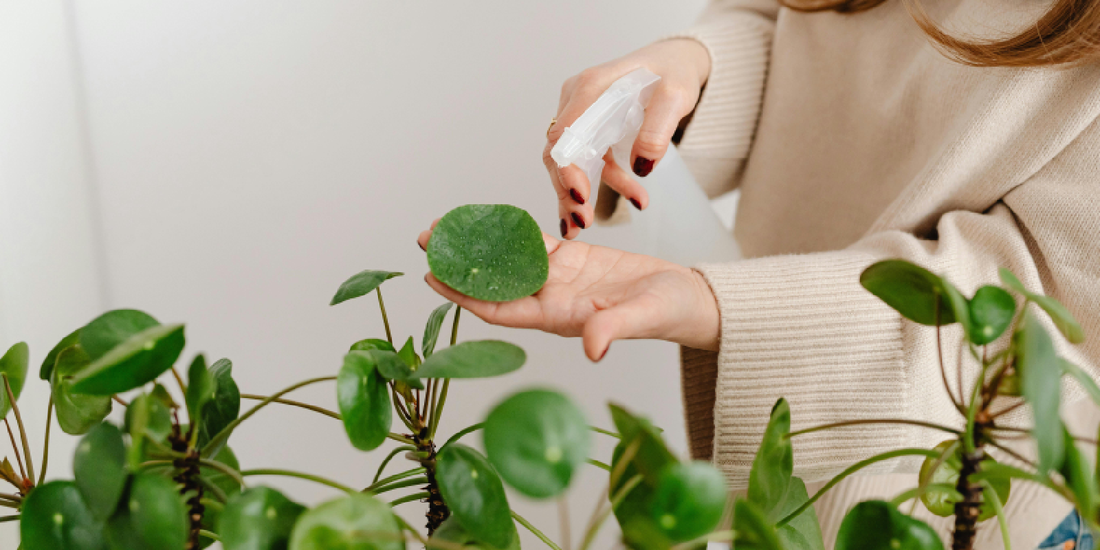
LED vs CFL Grow Lights: What to Know Before Buying
Share
Indoor gardening has become more than just a hobby—it’s a lifestyle for plant lovers who want lush greenery thriving all year round, regardless of the season or climate. Whether you are nurturing herbs on a kitchen counter, building a full vertical garden in your living room, or using a specialized product like the amoyls VerdantGlow S-Shaped 8-Tier Plant Shelf with Grow Lights, your choice of grow lights can determine the success of your indoor plants.
Two of the most common grow light options are LED (Light Emitting Diode) and CFL (Compact Fluorescent Lamp). Both provide artificial light that mimics the sun, but they differ significantly in efficiency, cost, spectrum, and longevity. Choosing the right one requires an understanding of how each technology works and how it affects your plants.
In this article, we will compare LED and CFL grow lights in depth—covering energy use, spectrum quality, plant performance, cost analysis, and practical setup tips—so you can make an informed decision before buying.
Why Grow Lights Matter
Plants rely on photosynthesis, a process that converts light energy into chemical energy for growth. Sunlight provides the full spectrum of light (including red, blue, and green wavelengths), but indoor spaces often lack sufficient natural light.
This is where grow lights step in. By providing consistent and targeted light, they allow you to:
- Grow plants year-round, regardless of season.
- Place greenery in spaces with little or no natural sunlight.
- Support seedlings, herbs, and ornamentals with tailored light conditions.
- Maximize the yield and health of plants in vertical shelves or compact apartments.
The amoyls VerdantGlow shelf integrates natural-spectrum grow lights, designed to cover multiple tiers of plants evenly. However, many growers still ask: should I stick with CFL bulbs, or invest in LED technology?
Understanding CFL Grow Lights
CFL lights are a form of fluorescent lighting, modified into a compact spiral shape to fit standard sockets.
Advantages of CFL Lights:
- Affordable Initial Cost – CFL bulbs are inexpensive and widely available.
- Moderate Heat Output – They produce less heat compared to older incandescent bulbs.
- Good for Beginners – Easy to find in supermarkets and hardware stores.
- Neutral White Light – Some CFLs provide a relatively broad spectrum suitable for general plant growth.
Limitations of CFL Lights:
- Lower Efficiency – CFLs consume more energy compared to LEDs for the same light output.
- Shorter Lifespan – Typically last 8,000–10,000 hours, much less than LEDs.
- Fragility – Glass design makes them easy to break.
- Mercury Content – Contains a small amount of toxic mercury, requiring special disposal.
- Limited Intensity – Better for small setups or single-tier shelves, but not ideal for larger plant collections.
In short, CFL grow lights are budget-friendly but outdated in terms of efficiency and sustainability.
Understanding LED Grow Lights
LED grow lights use semiconductor diodes to emit light. They have rapidly become the gold standard for indoor gardening due to their versatility and performance.
Advantages of LED Lights:
- High Energy Efficiency – LEDs use significantly less electricity while producing stronger light.
- Long Lifespan – 25,000–50,000+ hours, lasting years without replacement.
- Low Heat Output – Safer for plants, reduces the risk of leaf burn.
- Customizable Spectrum – LEDs can be engineered to emit specific wavelengths for optimal plant growth (red and blue are especially important).
- Eco-Friendly – No mercury, less waste, and better sustainability.
- Compact & Flexible – Can be integrated into sleek designs like the amoyls VerdantGlow shelf, ensuring even coverage across multiple tiers.
Limitations of LED Lights:
- Higher Upfront Cost – Quality LED grow lights are more expensive than CFLs.
- Light Intensity Can Be Strong – Some high-powered LEDs require careful placement to avoid stressing plants.
- Market Confusion – Wide variety of LED grow lights means buyers need to be cautious about quality and specifications.
Overall, LEDs are the future of indoor plant lighting, combining efficiency, power, and durability.
Spectrum: The Science Behind Plant Growth
When comparing LED vs CFL, spectrum quality is crucial.
-
CFL Spectrum:
CFLs emit a broad spectrum of light, but much of it is wasted because it does not target the wavelengths most beneficial to plants. -
LED Spectrum:
LED technology allows precise control over wavelengths. Manufacturers can design grow lights that provide blue light (400–500 nm) for leaf development, and red light (600–700 nm) for flowering and fruiting.
The amoyls VerdantGlow shelf uses natural full-spectrum LEDs that replicate sunlight, giving plants everything they need without overemphasizing unnecessary wavelengths.
Energy Consumption & Cost Analysis
Let’s break down cost efficiency:
- CFL Example:
- 100W CFL bulb ≈ 10,000 hours lifespan.
- Electricity usage: 100W × 10,000 hours = 1,000 kWh.
- At $0.15/kWh, cost = $150 in electricity.
- LED Example:
- 40W LED grow light ≈ 25,000–50,000 hours lifespan.
- Electricity usage: 40W × 25,000 hours = 1,000 kWh (same energy use, but lifespan is 2.5× longer).
- At $0.15/kWh, cost = $150 in electricity but spread across a much longer time.
Conclusion: While LEDs may cost more upfront, their longevity and efficiency make them cheaper in the long run.
Practical Considerations Before Buying
When choosing between LED and CFL grow lights, consider the following:
- Space Size – Small single-tier shelves may do fine with CFLs, but multi-tier stands (like the VerdantGlow 8-tier shelf) require LEDs for proper coverage.
- Plant Type – Leafy greens and herbs may survive under CFLs, but flowering plants thrive under LED spectrum control.
- Budget – CFLs win in initial price, but LEDs save money over years of use.
- Aesthetics – LEDs can be integrated into sleek, modern designs without bulky bulbs.
- Maintenance – Fewer replacements make LEDs more convenient for busy plant owners.
Why amoyls VerdantGlow Shelf Uses LED Grow Lights
The amoyls VerdantGlow S-Shaped 8-Tier Plant Shelf is designed with built-in natural-spectrum LED grow lights for several reasons:
- Even Illumination – Every tier gets consistent light, avoiding uneven growth.
- Energy Efficiency – Keeps electricity bills low while supporting multiple plants.
- Long-Term Durability – Designed to last years without bulb replacements.
- Eco-Friendly Choice – Sustainable materials and LED technology reduce waste.
- Stylish Design – A modern shelf that enhances interiors while keeping plants healthy.
By using LED lights instead of CFLs, amoyls ensures that plant lovers get a reliable, efficient, and elegant solution for indoor gardening.
Final Thoughts: Which Should You Choose?
- Choose CFL if you are a beginner, working with a very tight budget, or only growing a few small herbs on a windowsill.
- Choose LED if you want long-term efficiency, healthier plants, and a scalable indoor garden setup.
For serious indoor gardeners or anyone considering a multi-tier shelf like the VerdantGlow, LEDs are the clear winner.
Conclusion
The debate of LED vs CFL grow lights ultimately comes down to efficiency, longevity, and plant performance. While CFLs still work for basic setups, LEDs are more cost-effective, sustainable, and plant-friendly in the long run.
If you are planning to expand your indoor garden, or want an all-in-one solution, the amoyls VerdantGlow S-Shaped 8-Tier Plant Shelf with Grow Lights provides the perfect combination of stylish design and advanced LED technology—ensuring your plants flourish in every season.
